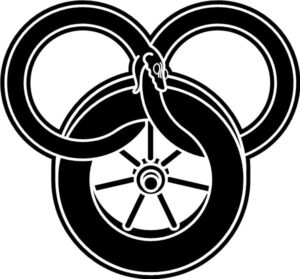Andrew Cunningham and Lee Hutchinson have spent decades of their lives with Robert Jordan and Brandon Sanderson’s Wheel of Time books, and they previously brought that knowledge to bear as they recapped each first season episode and second season episode of Amazon’s WoT TV series. Now we’re back in the saddle for season 3—along with insights, jokes, and the occasional wild theory.
These recaps won’t cover every element of every episode, but they will contain major spoilers for the show and the book series. We’ll do our best to not spoil major future events from the books, but there’s always the danger that something might slip out. If you want to stay completely unspoiled and haven’t read the books, these recaps aren’t for you.
New episodes of The Wheel of Time season three will be posted for Amazon Prime subscribers every Thursday. This write-up covers episode five, “Tel’Aran’Rhiod,” which was released on March 27.
The show introduces or expands a bunch of book plotlines as it hops between perspectives this week. Which are you the most interested in picking apart, Lee? Anything the show is tending to here that you wish we were skipping?
Credit:
Prime/Amazon MGM Studios
“Let it go, let it goooooo…” A Sea Folk Windfinder, doing her thing.
Credit:
Prime/Amazon MGM Studios
I was a little taken aback at the casualness with which Elaida takes lives—her execution of Black Ajah sister Amico Nagoyin was pretty off-handed. I don’t recall her being quite that blasé about death in the books, but it has been a while. Regardless, while she’s not capital-E EEEEEVIL, she’s clearly not a good person.
We do get our first glimpse of the Sea Folk, though it felt a bit ham-fisted—like they spent both more time than they needed to tee them up, and much less time than was needed to actually establish WTF this new group of people is. (Though I guess the name “Sea Folk” is pretty explanatory—it does what it says on the tin, as it were.)
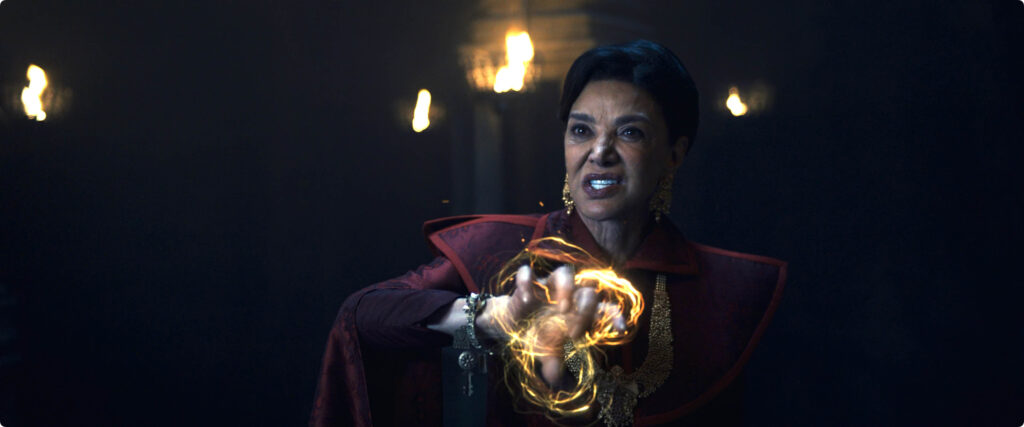
My eyes see Elaida Sedai, but my ears and heart hear Chrisjen Avasarala saying “Sometimes I f—ing hate being right.”
My eyes see Elaida Sedai, but my ears and heart hear Chrisjen Avasarala saying “Sometimes I f—ing hate being right.”
There’s a lot of Aiel and Sea Folk stuff where the show is just kind of asking you to take things at face value, even if book-readers are aware of more depth. One of the big running plotlines in the book is that the White Tower has weakened itself by being too doctrinaire about the way it absorbs the channelers of other cultures, totally taking them away from their families and societies and subjecting them to all kinds of weird inflexible discipline. This is why there are so many Aiel and Sea Folk channelers running around that the White Tower doesn’t know about, and the show has nodded toward it but hasn’t had a lot of room to communicate the significance of it.
This doesn’t seem to be the case, though, as we see by the sheer number of channelers popping up everywhere, and Alanna’s hypothesis proves correct: the old blood of Manetheren runs true and strong, spilling out in ta’veren and channelers and other pattern-twisting craziness all over the place.
Alanna has her own challenges to face, but first, I want to hear your take on the Aiel in this post-Rhuidean episode, and especially of Cold Rocks Hold—a place that I know a subset of fans have been imagining for decades. What did you think?
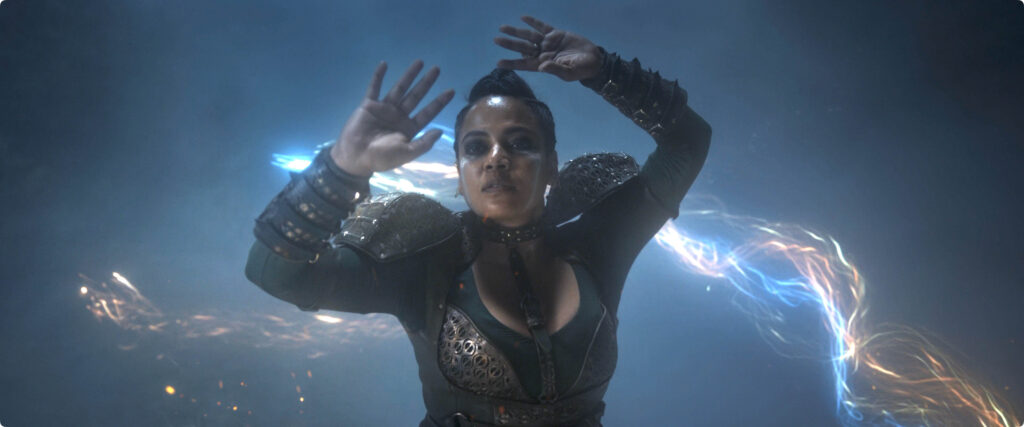
Credit:
Prime/Amazon MGM Studios
Alanna Sedai’s intuition is right on the money.
Credit:
Prime/Amazon MGM Studios
The show does a solid job of showing us what day-to-day Aiel society looks like through just a handful of characters, including Rhuarc’s other wife Lian and his granddaughter Alsera. It’s an economy of storytelling that is forced upon the show by budget and low episode count but usually you don’t feel it.
We’re also getting our very first look at the awe and discomfort that Rand is going to inspire, as the prophesied Aiel chief-of-chiefs. Clan leaders are already telling tales of him to their children. But not everyone is going to have an easy time accepting him, something we’ll probably start to pick apart in future episodes.
Alanna is definitely in the running for my favorite overhauled show character. She’s visible from very early on as a background character and loose ally of the Two Rivers crew in the books, but the show is giving her more of a personality and a purpose, and a wider view than Book-Alanna (who was usually sulking somewhere about her inability to take any of the Two Rivers boys as a Warder, if memory serves). In the show she and her Warder Maksim are fleshed-out characters who are dealing with their relationship and the Last Battle in their own way, and it’s fun to get something unexpected and new in amongst all of the “how are they going to portray Book Event X” stuff.
I think you’ve hit upon the main overarching change from the books, bigger than all other changes: The show has made an effort to make these characters into people with relatable problems, rather than a pack of ill-tempered, nuance-deaf ding-dongs who make bad choices and then have to dig themselves out.
Well, except maybe for Elayne. I do still kind of want to shake her a bit.
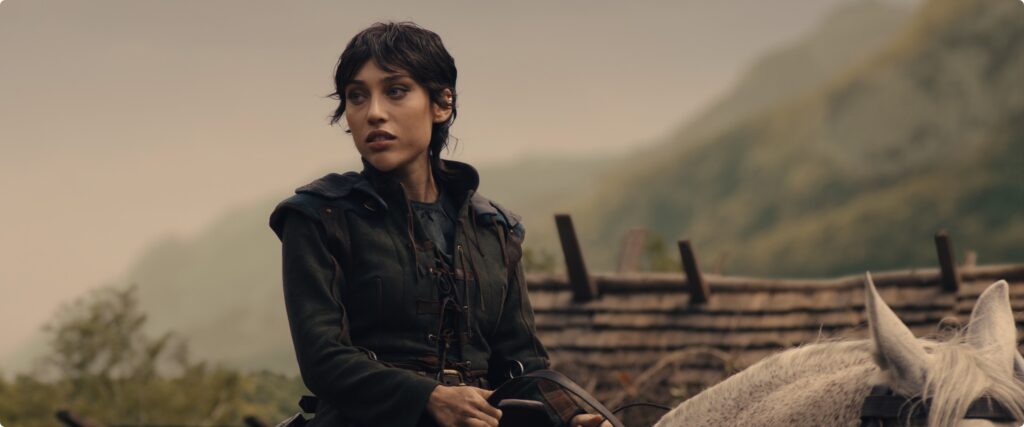
Credit:
Prime/Amazon MGM Studios
Hey, it’s Faile, and I don’t hate her!
Credit:
Prime/Amazon MGM Studios
In terms of Big Book Things that are happening, let’s talk about Egwene briefly. Obviously she’s beginning to hone her skills in the World of Dreams—Tel’aran’rhiod, which gives the episode its name—and she’s already using it to facilitate faster communication between far-flung characters and to check in on her friends. Two other, minor things: We’re starting to see Rand and Egwene drift apart romantically, something the books had already dispensed with by this point. And this was the first time I noted an Aiel referring to her as “Egwene Sedai.” I assume this has already happened and this is just the first time I’ve noticed, but Egwene/Nynaeve/Elayne playing at being full Aes Sedai despite not being is a plot thread the books pull at a lot here in the middle of the series.
Lee: Right, I seem to remember the dissembling about Egwene’s Sedai-ishness resulting in some kind of extended spanking session, that being the punishment the Book Wise Ones (and the Book Aes Sedai) were most likely to hand out. I think the characters’ pretending to be full Sisters and all the wacky hijinks that ensue are being dispensed with, and I am pretty okay with that.
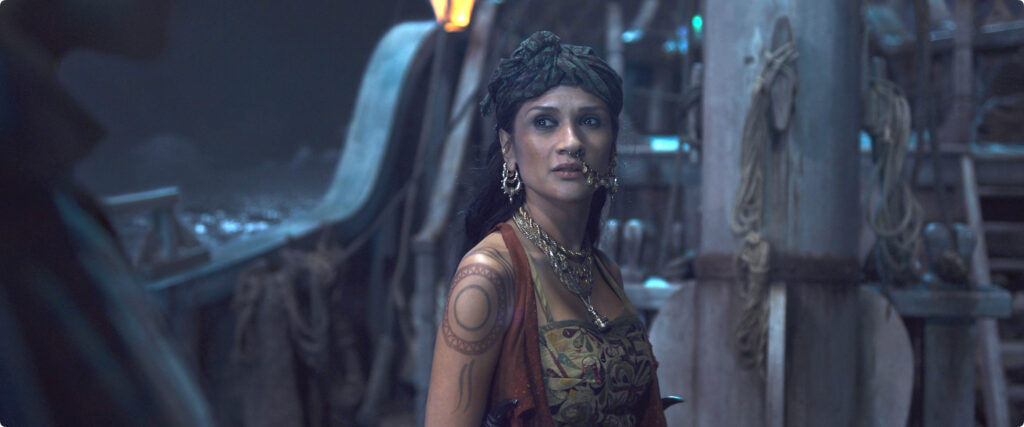
Credit:
Prime/Amazon MGM Studios
The Sea Folk wear tops!
Credit:
Prime/Amazon MGM Studios
Andrew: That’s the thing, I’m not sure the characters pretending to be full Sisters is being dispensed with. The show’s just dropping breadcrumbs so that they’re there later, if/when they want to make a Big Deal out of them. We’ll see whether they make the time or not.
And on the subject of dreams—or at least visions—I think we’d be remiss if we didn’t check in on the continuing bro-adventures of Min and Mat (which my cousin described as “a lesbian and her gay best friend hanging out, and it’s unclear which is which”). The show once again takes the opportunity to remind us of Min’s visions—especially the one of Mat being hanged. Foreshadowing!
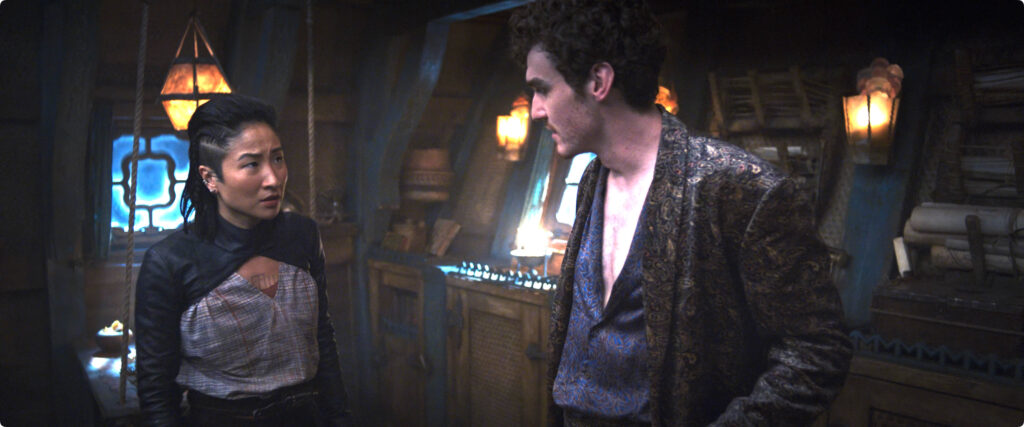
Credit:
Prime/Amazon MGM Studios
The buddy comedy we didn’t know we needed.
Credit:
Prime/Amazon MGM Studios
I am a little worried that we only have three episodes left, since we’ve got the party split up into four or five groups, and most of those groups already have little sub-groups inside of them who are doing their own thing. I do trust the show a lot at this point, but the splitting and re-splitting of plotlines is what eventually gets the books stuck in the mud, and we’ve already seen that dynamic play out on TV in, say, mid-to-late-series Game of Thrones. I just hope we can keep things snappy without making the show totally overwhelming, as it is already in danger of being sometimes.
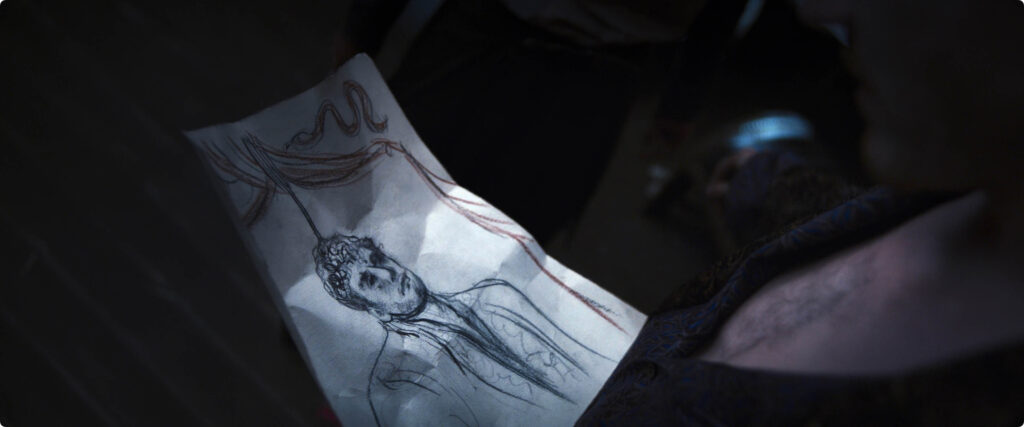
Credit:
Prime/Amazon MGM Studios
There are constant reminders that Mat may be heading toward a dark fate.
Credit:
Prime/Amazon MGM Studios
Let’s see—for closing points, the one I had on my notepad that I wanted to hit was that for me, this episode reinforces that this show is at its best when it focuses on its characters and lets them work. Episode four with Rhuidean was a rare epic hit; most of the times the show has attempted to reach for grandeur or epic-ness, it has missed. The cinematography falls flat, or the sets look like styrofoam and carelessness, or the editing fails to present a coherent through-line for the action, or the writing whiffs it. But up close, locked in a ship or sitting on a mountainside or hanging out in a blacksmith’s dream, the actors know what they’re doing, and they have begun consistently delivering.
Andrew: There are a whole lot of “the crew spends a bunch of time in a city you’ve never seen before, accomplishing little-to-nothing” plotlines I think you’re conflating. Tanchico is a Book 4 thing, and it’s also mostly resolved in Book 4; the interminable one you are probably thinking of is Ebou Dar, where characters spend three or four increasingly tedious books. Far Madding is later and at least has the benefit of being brief-ish.
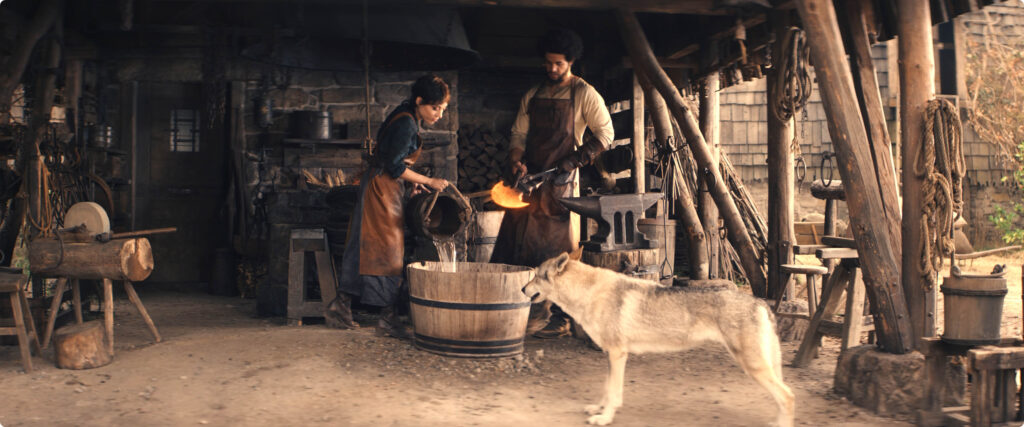
Credit:
Prime/Amazon MGM Studios
Perrin dreams of peaceful times—and of hanging out with Hopper!
Credit:
Prime/Amazon MGM Studios
Lee: Ahhh, yes, you are absolutely correct! My Randland mental map is a bit tattered these days. So many city-states. So many flags. So many import and export crops to keep track of.
But in terms of this episode, I don’t have much more to say. We’re scooting pieces around the board in service of larger confrontations later on. It remains a very dense show, which is what I think will keep it from ever achieving a Game of Thrones level of cultural currency. But I’m still having fun. Anything else you want to highlight? Shoes you’re waiting to drop?
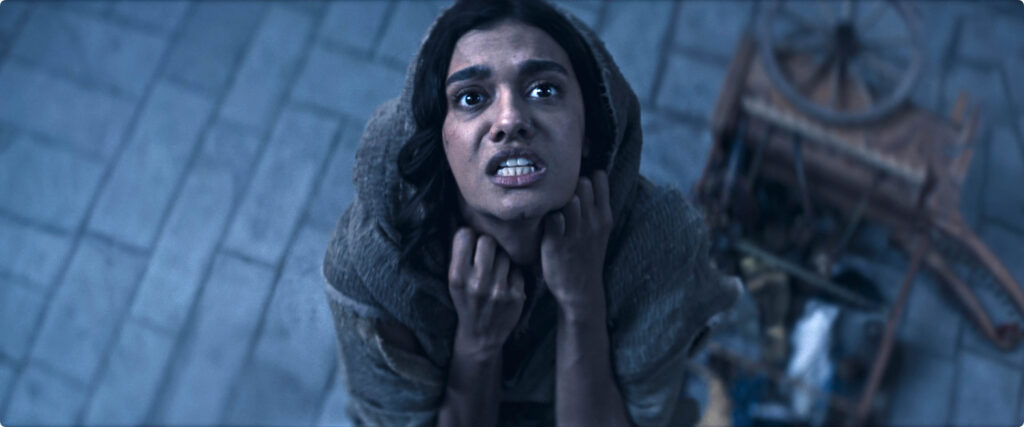
Credit:
Prime/Amazon MGM Studios
Egwene, entering the “finding out” phase of her ill-advised nighttime adventures.
Credit:
Prime/Amazon MGM Studios
Until next week, dear readers—beware the shadows, and guard yourselves. I hear Lanfear walks the dream world this night.
